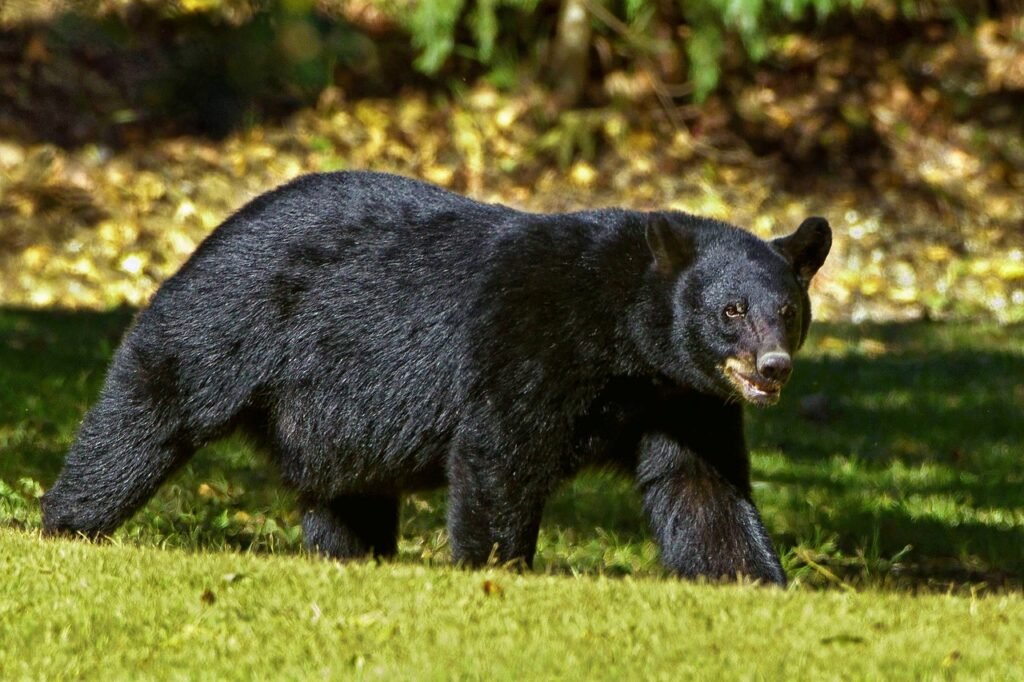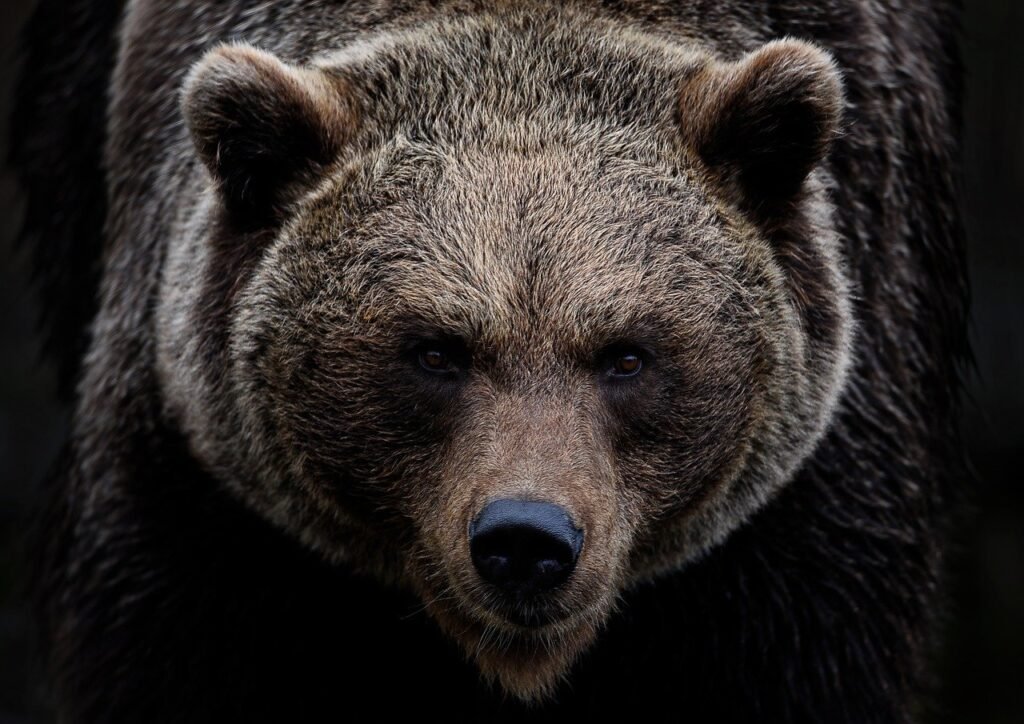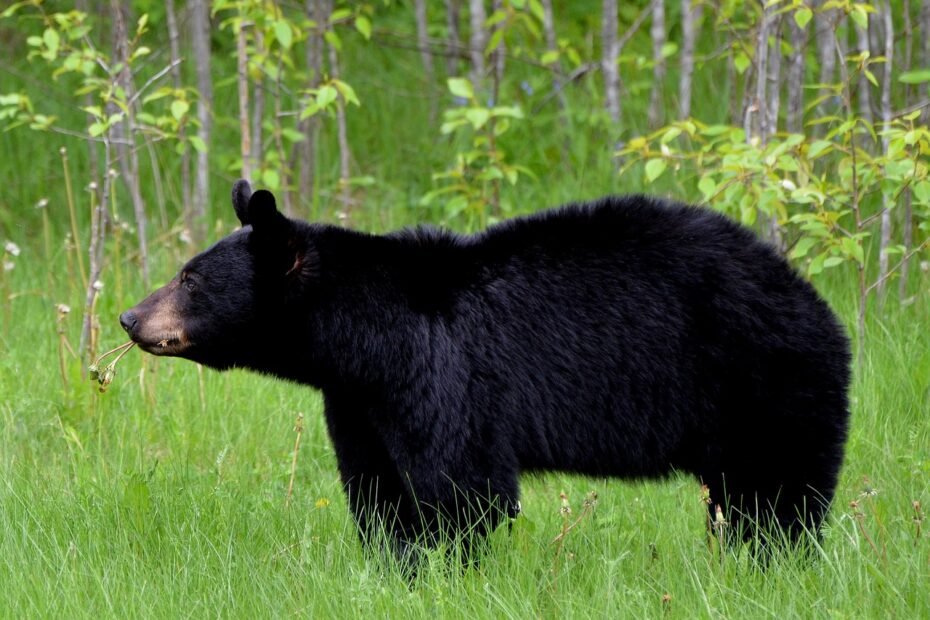The Everglades, a vast, swampy ecosystem known for its unique wildlife, is home to some of Florida’s most fascinating creatures, including the elusive black bear. Though not often seen by visitors, these bears play a crucial role in maintaining the balance of this diverse environment. In this article, we’ll dive into the world of black bears in the Everglades, covering where they live, what they eat, and their place as top predators in the ecosystem.
Are There Bears in the Everglades?
Yes, black bears are indeed found in the Florida Everglades! While the Everglades are primarily known for their alligators and panthers, black bears are a hidden yet integral part of this ecosystem. Due to the dense forests and swamps, spotting a bear can be rare, but they do roam the Everglades National Park and surrounding areas.
How Many Bears Are in the Everglades?

The Florida Fish and Wildlife Conservation Commission (FWC) estimates that there are around 4,050 black bears across Florida. However, the bear population within the Everglades specifically is harder to estimate, as these bears roam widely across the dense and challenging terrain. Black bears are adaptable and move through forests, swamps, and grasslands, so they may cover large areas, making it difficult to pinpoint their exact numbers in the Everglades.
What Do Black Bears Eat in the Everglades?
Black bears are omnivores, meaning they eat both plants and animals. In the Everglades, their diet consists of various native foods that the ecosystem provides year-round. Here’s a breakdown of some favorite foods for black bears in the Everglades:
1. Sabal Palm Fruits: These fruits, also known as cabbage palm berries, are a popular snack for black bears. They’re high in nutrients and provide a steady food source.
2. Berries and Fruits: Black bears feast on different berries, fruits, and nuts found throughout the Everglades, such as saw palmetto berries.
3. Small Animals and Insects: Black bears occasionally hunt small animals and insects for protein, including fish and even frogs.
4. Wading Birds and Eggs: Though rare, bears may raid nests of wading birds when other food sources are scarce.
5. Carrion: Black bears aren’t picky eaters and will eat carrion (dead animals) if they come across it, making them helpful in cleaning up the environment.
This varied diet ensures that bears get the nutrients they need to survive, especially in leaner seasons when certain food sources are limited.
Bears as Top Predators in the Everglades

While not the top predator in the Everglades—that title goes to the Florida panther and the American alligator—black bears are among the top-tier animals in the Everglades ecosystem. Bears have few natural predators due to their size, with adults often weighing over 300 pounds and boasting powerful limbs, long sharp claws, and remarkable strength. Their primary threats come from humans and habitat loss rather than other wildlife.
Other predators in the Everglades include:
• Florida Panthers: These rare and endangered big cats are adept hunters, mostly preying on deer, but they coexist with black bears.
• American Alligators and Crocodiles: These reptiles dominate the waterways and sometimes compete with bears for resources near swamps and rivers.
• Burmese Pythons: As an invasive species, Burmese pythons have disrupted the Everglades’ ecosystem, sometimes competing with native predators for food.
Despite these formidable animals, black bears in the Everglades hold their own and continue to thrive as they adapt to changes in their habitat.
Adaptations of Black Bears in the Everglades
Florida black bears are highly adaptable creatures with features that allow them to navigate the complex landscapes of the Everglades. Here’s what makes them so resilient:
• Omnivorous Diet: Their flexible diet allows them to eat what’s available, from fruits and plants to small animals and carrion.
• Climbing Trees: Black bears are skilled climbers, which helps them find food and avoid potential threats.
• Short Tails and Strong Limbs: Their strong, stocky bodies make them adept at moving through thick forests and swamps.
• Highly Developed Senses: Black bears rely on their sharp sense of smell to locate food and detect danger from a distance.
These adaptations make black bears well-suited for life in the Florida Everglades, where the environment can be both lush and challenging.
Threats to Everglades Black Bears
Despite their resilience, black bears face numerous challenges that threaten their survival in the Everglades and other parts of Florida:
1. Habitat Loss: With urban development encroaching on natural habitats, bears are forced to venture closer to human settlements, which increases human-bear conflicts.
2. Road Collisions: As they roam, bears often cross roads and highways, putting them at risk of being struck by vehicles.
3. Invasive Species: The presence of invasive species like Burmese pythons disrupts the natural balance of the Everglades, affecting the food web.
4. Poaching and Illegal Hunting: Although black bears are protected in Florida, illegal hunting still poses a threat to their population.
The Florida Fish and Wildlife Conservation Commission is actively working on conservation efforts to protect and sustain the black bear population, promoting awareness and safety measures for humans and bears alike.
Why Are Black Bears Important to the Everglades Ecosystem?

Black bears play a crucial role in the Everglades ecosystem. As omnivores, they help regulate populations of smaller animals and contribute to seed dispersal by eating fruits and berries, which promotes plant diversity. By scavenging on carrion, black bears also help keep the environment clean, reducing disease spread.
Their presence in the Everglades supports a balanced ecosystem, helping maintain the natural order among predators and prey. Conservation efforts ensure that these bears continue to thrive, preserving the natural beauty and biodiversity of this unique region.
Where Can You See Bears in the Everglades?
1. Everglades National Park’s Pine Rocklands: Bears are known to wander through the pine rocklands, a unique ecosystem within the park.
2. Big Cypress National Preserve: This nearby area also supports a healthy black bear population, with its dense forests and remote swamps providing ideal habitat.
3. Wilderness Trails and Campsites: Remote trails and campsites sometimes report bear sightings, but these animals usually stay hidden.
While encountering a bear in the Everglades is rare, visitors should always exercise caution and follow park guidelines to ensure both their own safety and the safety of the wildlife. There are dozens of Florida Everglades Wildlife Tours available, and sharp-eyed tourists may well be lucky enough to spot a Florida Black Bear by joining one of these exciting adventures.
Tips for Staying Safe Around Black Bears
If you’re exploring the Everglades, here are some key tips for staying safe in bear country:
• Keep Your Distance: Black bears are generally shy and will avoid humans, but if you spot one, observe from a distance.
• Store Food Properly: Bears have an excellent sense of smell, so store all food securely, especially if you’re camping.
• Stay Calm: If you encounter a bear, don’t run. Instead, back away slowly and give the bear space to retreat.
• Make Noise: While hiking, make occasional noise to avoid startling a bear that may be nearby.
Following these simple guidelines helps ensure a safe and respectful interaction with the natural inhabitants of the Everglades.
Conclusion:

From their dietary habits to their role in the ecosystem, bears in the Everglades are an essential part of Florida’s natural landscape. Despite the challenges they face, black bears continue to thrive in this unique environment, adapting to changes and helping maintain the ecological balance. For those fortunate enough to spot a bear on their visit, it’s an unforgettable reminder of the Everglades’ wild and wondrous nature.
So, next time you’re exploring the Florida Everglades, keep an eye out—you might just catch a glimpse of one of these remarkable creatures!
